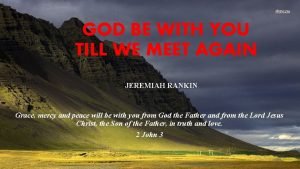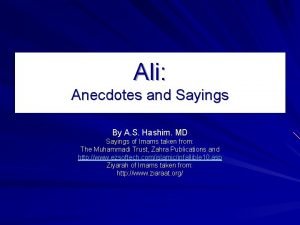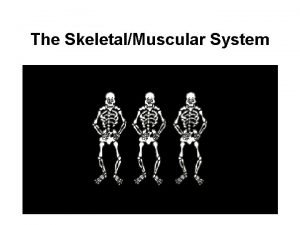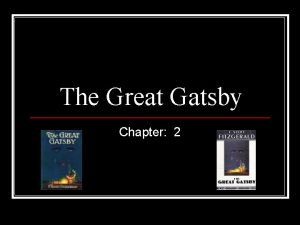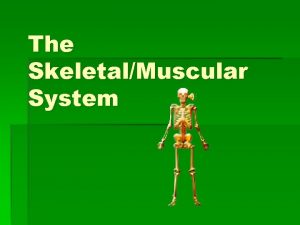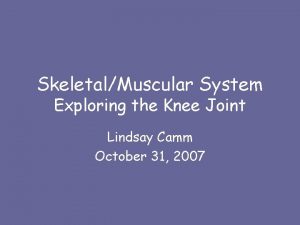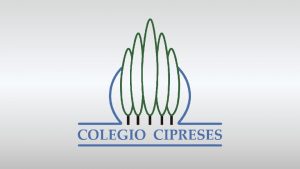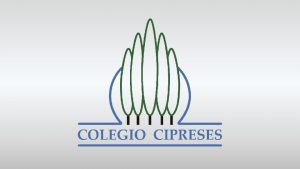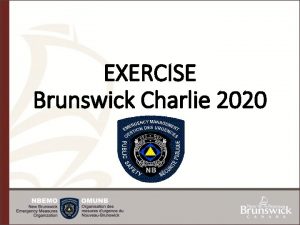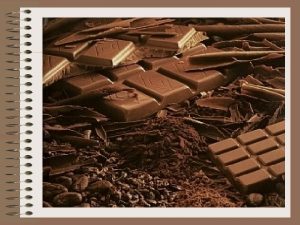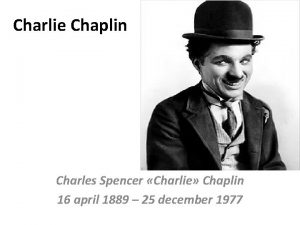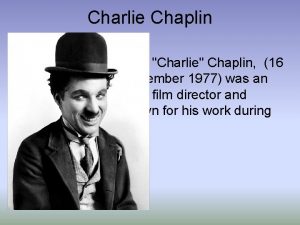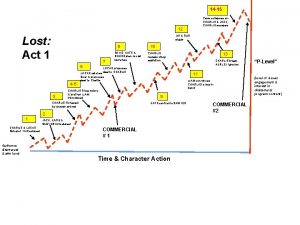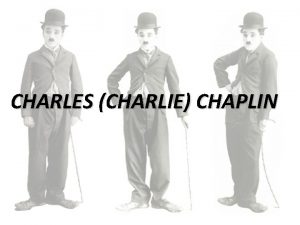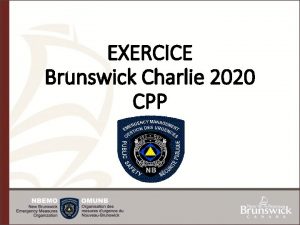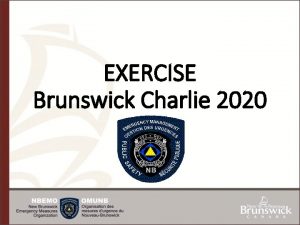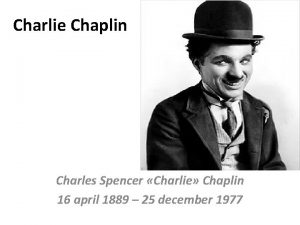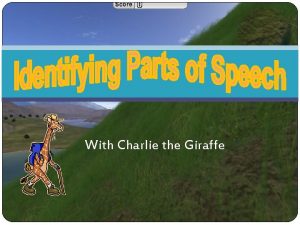The SkeletalMuscular System Meet Charlie Why do we




























- Slides: 28

The Skeletal/Muscular System

Meet Charlie • Why do we need a skeleton? • Broken bones, x-ray • Find the bone on Charlie • http: //www. innerbody. co m/image/skelfov. html

Skull Shoulder Blade Humerus Ulna Radius Collarbone Ribs Vertebrae Pelvis Femur Tibia Fibula

Skull Shoulder Blade Humerus Ulna Radius Collarbone Ribs Vertebrae Pelvis Femur Tibia Fibula

Why do we need a skeleton? N Protection N Movement N Support

Movement and joints

Joints • occur where bone meets bone • 2 main divisions of joints: Ø Immovable Ø Moveable

Immovable fused joint • No movement • Where? – skull, pelvis

Moveable E. g. synovial joint

E. g. hinge joint • Movement in one direction only • Where? - Elbow and knee

E. g. ball and socket joint • Movement in all directions • Where? – shoulder and hip

Double jointed? • having unusually flexible joints especially of the limbs or fingers • Joint hypermobility

Summary There are 3 main types of joints: 1. Fused joint e. g. skull 2. Ball and socket joint e. g. shoulder and hip 3. Hinge joint e. g. elbow and knee

Muscles and joints


What holds our bones together? • Ligaments connect bone to bone • Tough rope like fibres known as ligaments. • Restrict movement

Can bones move on their own? 2 1

What joins muscles to bones? • Tendons join muscle to bones • Strong and nonelastic • Pulls on bone

How do muscles work? • Muscles can only actively contract – Relaxing does not require action • Muscles work in pairs – Called Antagonistic pairs • When one muscles contracts, the other relaxes • E. g. biceps and triceps

The biceps and triceps - an antagonistic pair

Tendon Biceps Contracted Tendon Triceps Relaxed

Tendon Triceps Biceps Contracted Relaxed Tendon

Tendon Biceps Contracted Tendon Triceps Relaxed

Tendon Triceps Biceps Contracted Relaxed Tendon

Bone composition • Bone is made of living and nonliving material • The living material lays down the non -living

What is bone made of? Organic – living – cells and protein • Cells – take up calcium salt from the blood – Cells release salts to make hard material • Protein – Flexibility • Inorganic –non-living – Calcium salts

How do we keep our bones healthy? • Weight bearing exercise • Calcium • Vitamin D

Summary • • Ligaments connect bone to bone Tendons join muscle to bones Muscles can only actively contract Muscles work in pairs called Antagonistic pairs • Bone is made of living and non-living material • Healthy bones need exercise, calcium and vitamin D.
 Why why why why
Why why why why God be with you until we meet again
God be with you until we meet again Why is charlie telling hashim jokes?
Why is charlie telling hashim jokes? Don't ask why why why
Don't ask why why why Charlie system
Charlie system Who does tom take nick to meet?
Who does tom take nick to meet? Hình ảnh bộ gõ cơ thể búng tay
Hình ảnh bộ gõ cơ thể búng tay Bổ thể
Bổ thể Tỉ lệ cơ thể trẻ em
Tỉ lệ cơ thể trẻ em Gấu đi như thế nào
Gấu đi như thế nào Thang điểm glasgow
Thang điểm glasgow Hát lên người ơi
Hát lên người ơi Môn thể thao bắt đầu bằng chữ f
Môn thể thao bắt đầu bằng chữ f Thế nào là hệ số cao nhất
Thế nào là hệ số cao nhất Các châu lục và đại dương trên thế giới
Các châu lục và đại dương trên thế giới Cong thức tính động năng
Cong thức tính động năng Trời xanh đây là của chúng ta thể thơ
Trời xanh đây là của chúng ta thể thơ Mật thư anh em như thể tay chân
Mật thư anh em như thể tay chân 101012 bằng
101012 bằng độ dài liên kết
độ dài liên kết Các châu lục và đại dương trên thế giới
Các châu lục và đại dương trên thế giới Thể thơ truyền thống
Thể thơ truyền thống Quá trình desamine hóa có thể tạo ra
Quá trình desamine hóa có thể tạo ra Một số thể thơ truyền thống
Một số thể thơ truyền thống Bàn tay mà dây bẩn
Bàn tay mà dây bẩn Vẽ hình chiếu vuông góc của vật thể sau
Vẽ hình chiếu vuông góc của vật thể sau Nguyên nhân của sự mỏi cơ sinh 8
Nguyên nhân của sự mỏi cơ sinh 8 đặc điểm cơ thể của người tối cổ
đặc điểm cơ thể của người tối cổ

